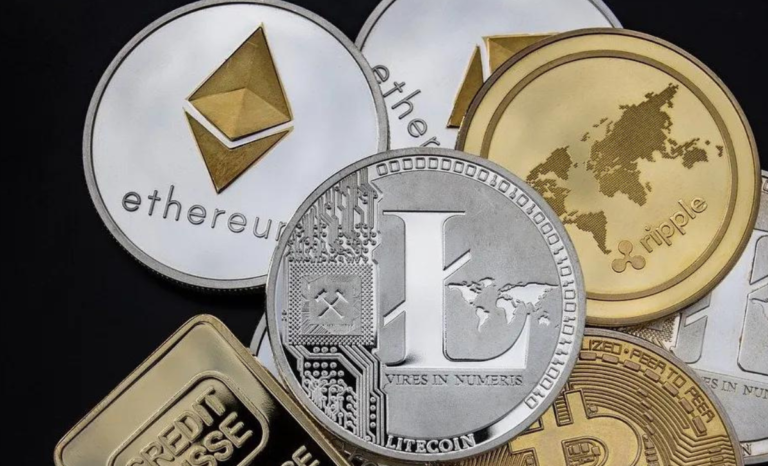How many Ethereum are left?
There is no fixed number of Ethereum that are left as the supply of Ethereum is not predetermined.
The Current Supply of Ethereum: A Closer Look
The Current Supply of Ethereum: A Closer Look

In the world of cryptocurrencies, Ethereum has emerged as one of the most popular and widely used platforms. With its smart contract capabilities and decentralized applications, Ethereum has revolutionized the way we think about blockchain technology. As more and more people become interested in Ethereum, one question that often arises is: how many Ethereum are left?
To answer this question, we need to understand how Ethereum is created and distributed. Unlike traditional currencies that are issued by central banks, Ethereum is generated through a process called mining. Miners use powerful computers to solve complex mathematical problems, and in return, they are rewarded with newly created Ethereum.
When Ethereum was first launched in 2015, there was no limit to the number of coins that could be created. However, in 2017, the Ethereum community decided to implement a new monetary policy known as Ethereum Improvement Proposal 186 (EIP-186). This proposal introduced a cap on the total supply of Ethereum, limiting it to 18 million coins per year.
The decision to implement a cap was driven by several factors. First, it was a way to combat inflation and ensure the long-term stability of the Ethereum network. By limiting the supply of new coins, the value of existing coins would be protected from dilution. Second, it was a way to incentivize miners to secure the network. With a limited supply, miners would have a greater incentive to continue mining and maintaining the Ethereum blockchain.
As of now, the total supply of Ethereum is around 115 million coins. This means that approximately 6.4% of the total supply has been mined. However, it’s important to note that not all of these coins are in circulation. Some are held by early investors, developers, and the Ethereum Foundation.
So, how many Ethereum are left to be mined? According to the current rate of mining, it is estimated that all 18 million coins will be mined by the year 2022. After that, the supply of new coins will be significantly reduced, and the focus will shift to transaction fees as the main incentive for miners.
The limited supply of Ethereum has important implications for its value and future growth. As the demand for Ethereum continues to rise, the scarcity of coins will likely drive up their price. This has already been observed in the past, with Ethereum experiencing significant price increases during periods of high demand.
In addition to the limited supply, Ethereum also has a mechanism called the “difficulty bomb” that will make mining increasingly difficult over time. This is designed to encourage the transition from proof-of-work to proof-of-stake, a more energy-efficient consensus mechanism. Once this transition is complete, the supply of new coins will be further reduced, leading to even greater scarcity.
Understanding Ethereum’s Finite Supply: What it Means for Investors

Ethereum, the second-largest cryptocurrency by market capitalization, has gained significant attention in recent years. As more people become interested in investing in Ethereum, it’s important to understand the concept of its finite supply and what it means for investors.
Unlike traditional currencies, which can be printed or minted at will by central banks, Ethereum operates on a different principle. It is built on a decentralized blockchain network, where new coins are not created arbitrarily. Instead, Ethereum has a predetermined supply limit, which means that there is a fixed number of coins that will ever be in circulation.
The total supply of Ethereum is capped at 18 million coins per year. This limit was set by the creators of Ethereum to ensure that the currency remains scarce and valuable. Currently, there are around 115 million Ethereum coins in circulation, which means that approximately 63% of the total supply has already been mined.
The process of mining Ethereum involves solving complex mathematical problems using powerful computers. Miners compete with each other to solve these problems and are rewarded with newly minted Ethereum coins for their efforts. However, as time goes on, the difficulty of these problems increases, making it harder and more resource-intensive to mine new coins.
This difficulty adjustment mechanism is built into the Ethereum protocol to ensure that the rate of coin creation remains relatively constant over time. It is designed to prevent inflation and maintain the scarcity of Ethereum. As a result, the rate at which new coins are mined decreases over time, leading to a gradual slowdown in the growth of the Ethereum supply.
Based on the current rate of mining, it is estimated that all 18 million Ethereum coins will be mined by the year 2140. This means that there is a finite amount of Ethereum available, and once all the coins have been mined, no new coins will be created. This scarcity is one of the factors that contribute to the value of Ethereum and makes it an attractive investment option for many.
Investors who understand the concept of Ethereum’s finite supply recognize that as the demand for Ethereum increases, the limited supply will likely drive up its price. This is the basic principle of supply and demand economics. As more people want to buy Ethereum, but the supply remains fixed, the price of Ethereum is likely to rise.
However, it’s important to note that the value of Ethereum, like any other investment, is subject to market fluctuations and volatility. While the finite supply of Ethereum may contribute to its long-term value, short-term price movements can be influenced by various factors, such as market sentiment, regulatory developments, and technological advancements.
Ethereum’s Scarcity: Exploring the Implications for the Crypto Market

Ethereum’s Scarcity: Exploring the Implications for the Crypto Market
Ethereum, the second-largest cryptocurrency by market capitalization, has been gaining significant attention in recent years. As more individuals and institutions recognize its potential, one question that often arises is how many Ethereum are left? Understanding the scarcity of Ethereum is crucial for investors and enthusiasts alike, as it can have profound implications for the crypto market as a whole.
To comprehend the scarcity of Ethereum, we must first delve into its supply and issuance. Unlike traditional currencies, Ethereum operates on a decentralized network, utilizing blockchain technology. The total supply of Ethereum is not infinite, as is the case with fiat currencies. Instead, it has a predetermined maximum supply, which is currently set at 18.7 million Ether.
However, it is important to note that not all of these Ethereum are currently in circulation. The issuance of new Ethereum occurs through a process called mining. Miners, who contribute their computing power to the network, are rewarded with newly minted Ethereum. This process helps secure the network and validate transactions.
Currently, the Ethereum network is in a transitional phase, moving from a proof-of-work (PoW) consensus mechanism to a proof-of-stake (PoS) mechanism. This shift aims to improve scalability, energy efficiency, and security. As a result, the issuance of new Ethereum will decrease significantly once the transition is complete.
The scarcity of Ethereum has several implications for the crypto market. Firstly, it affects the price of Ethereum itself. As the supply becomes limited, the demand for Ethereum may increase, driving up its value. This scarcity can create a sense of urgency among investors, as they seek to acquire Ethereum before its supply diminishes further.
Furthermore, Ethereum’s scarcity can also impact the broader crypto market. Ethereum serves as the foundation for numerous decentralized applications (dApps) and smart contracts. Many other cryptocurrencies and projects rely on the Ethereum network for their operations. If Ethereum becomes scarce, it could potentially lead to increased competition among projects vying for limited resources, driving innovation and efficiency in the crypto space.
Additionally, Ethereum’s scarcity may also influence the adoption of alternative cryptocurrencies. As the supply of Ethereum dwindles, investors and developers may turn to other cryptocurrencies with similar functionalities. This could lead to increased interest in alternative platforms, potentially diversifying the crypto market and fostering healthy competition.
However, it is important to consider that scarcity alone does not guarantee value or success. The utility and adoption of Ethereum will ultimately determine its long-term viability. While scarcity can create a sense of value, it is crucial for Ethereum to continue evolving and addressing the challenges it faces, such as scalability and transaction fees.
The Future of Ethereum’s Supply: Predictions and Analysis
The Future of Ethereum’s Supply: Predictions and Analysis
Ethereum, the second-largest cryptocurrency by market capitalization, has been making waves in the digital currency world since its inception in 2015. With its innovative blockchain technology and smart contract capabilities, Ethereum has gained popularity among developers and investors alike. However, as with any finite resource, there is a pressing question on the minds of many Ethereum enthusiasts: how many Ethereum are left?
To answer this question, we must first understand the concept of Ethereum’s supply. Unlike traditional currencies, which are controlled by central banks and governments, Ethereum operates on a decentralized network. This means that the supply of Ethereum is not determined by any single entity but rather by the network itself.
Currently, the total supply of Ethereum is capped at 18 million coins per year. This limit was put in place to prevent inflation and ensure the long-term stability of the currency. However, it is important to note that this cap does not mean that there will only ever be 18 million Ethereum in existence. Instead, it means that the rate at which new Ethereum is created will decrease over time.
In fact, the rate of Ethereum creation is set to decrease significantly in the near future. This is due to a major upgrade to the Ethereum network known as Ethereum 2.0. This upgrade, which is expected to be completed in the coming years, will transition Ethereum from a proof-of-work (PoW) to a proof-of-stake (PoS) consensus mechanism.
Under the current PoW system, new Ethereum is created through a process called mining. Miners use powerful computers to solve complex mathematical problems, and in return, they are rewarded with newly minted Ethereum. However, this process is energy-intensive and has been criticized for its environmental impact.
The transition to a PoS system will change the way new Ethereum is created. Instead of relying on miners, the network will rely on validators who hold a certain amount of Ethereum as collateral. These validators will be chosen to create new blocks based on the amount of Ethereum they hold and are willing to “stake” as collateral.
This change in the consensus mechanism will have a significant impact on the rate of Ethereum creation. While the exact details of Ethereum 2.0 are still being finalized, it is expected that the annual supply of Ethereum will decrease to around 2 million coins per year. This means that the rate of Ethereum creation will be significantly slower than it is currently.
So, how many Ethereum are left? While it is difficult to provide an exact number, it is safe to say that the supply of Ethereum will continue to decrease over time. With the implementation of Ethereum 2.0 and the transition to a PoS system, the rate of Ethereum creation will slow down significantly. This decrease in supply, coupled with the growing demand for Ethereum, could potentially lead to an increase in its value.
Ethereum’s Limited Availability: How it Influences Price and Adoption
Ethereum, the second-largest cryptocurrency by market capitalization, has gained significant attention in recent years. As more people become interested in investing in Ethereum, one question that often arises is: how many Ethereum are left? Understanding the limited availability of Ethereum is crucial in comprehending its potential impact on price and adoption.
Unlike traditional currencies, Ethereum operates on a decentralized network called the blockchain. This technology ensures transparency, security, and immutability. However, it also introduces a unique concept: the limited supply of Ethereum. Unlike fiat currencies that can be printed at will, Ethereum has a predetermined maximum supply.
The maximum supply of Ethereum is capped at 18 million coins per year. This limit is designed to prevent inflation and maintain the value of the cryptocurrency. However, it is important to note that the current supply of Ethereum is significantly lower than the maximum supply. As of now, there are approximately 115 million Ethereum in circulation.
The limited availability of Ethereum has several implications for its price and adoption. Firstly, the scarcity of Ethereum can drive up its value. As demand for Ethereum increases, and the supply remains limited, the price tends to rise. This scarcity factor has contributed to the significant price appreciation of Ethereum over the years.
Moreover, the limited supply of Ethereum can also influence its adoption. With a finite number of coins available, Ethereum becomes a valuable asset that individuals and institutions may want to acquire. This scarcity can create a sense of urgency among potential investors, leading to increased adoption and usage of the cryptocurrency.
Additionally, the limited availability of Ethereum can also impact its use as a medium of exchange. As more people adopt Ethereum for transactions, the limited supply can create a situation where the currency becomes more valuable over time. This can incentivize individuals to hold onto their Ethereum rather than spend it, potentially hindering its use as a currency for everyday transactions.
However, it is important to note that Ethereum’s limited supply is not set in stone. The Ethereum network is designed to undergo regular upgrades, and one such upgrade, known as Ethereum 2.0, aims to transition the network from a proof-of-work to a proof-of-stake consensus mechanism. This upgrade will introduce changes to the supply dynamics of Ethereum, potentially altering its limited availability.
In conclusion, the limited availability of Ethereum plays a significant role in shaping its price and adoption. The scarcity of Ethereum can drive up its value, making it an attractive investment option. Additionally, the limited supply can create a sense of urgency among potential investors, leading to increased adoption and usage of the cryptocurrency. However, the limited supply of Ethereum may also hinder its use as a medium of exchange. It is important to keep in mind that the supply dynamics of Ethereum are subject to change with future upgrades to the network. As the cryptocurrency market continues to evolve, understanding the limited availability of Ethereum is crucial for investors and enthusiasts alike.As of September 2021, there are approximately 117 million Ethereum (ETH) in circulation.







